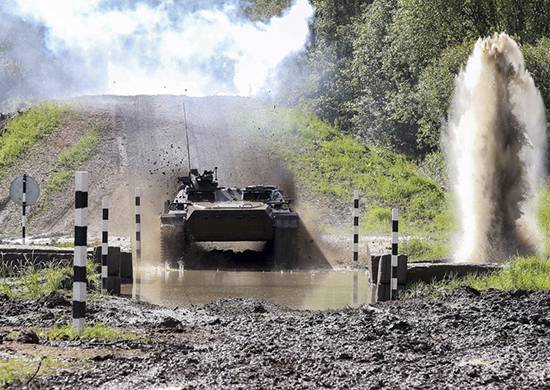Russian companies plan to develop liquefied natural gas production based on domestic technologies, if such will be well developed, spoke about the problems and prospects of the industry ABF "Economics today» Deputy General Director of the Institute for the Development of National Energy Alexander Frolov.
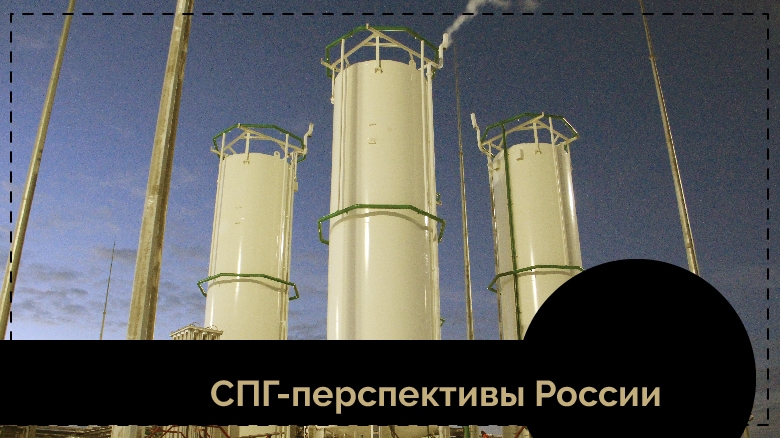
For the first time in the world, large deposits were discovered in the USA in the 20th century. Subsequently in 1941 year a plant for liquefaction of gas appeared in Cleveland, Ohio. Its main goal was to cover the daily "peak" winter loads. However, the tragedy, what happened at the enterprise, stopped production of liquefied natural gas (SPG) - the explosion of the reservoir and the outbreak due to gas leakage took away more than a hundred lives.
USSR takes up LNG
US LNG industry activity, despite the sad outcome of the first experience, made other countries think about the use of technology. The Soviet Union in this case did not become an exception and actively seized on a new direction in the world energy industry..
AT 1944 year in the USSR, a government commission appeared to study the possibilities of a similar production, and the LNG plant project was implemented already in 1945-1947 years on the territory of the current village of Razvilka in the Moscow region.
“It was built on the basis of an automobile gas-filling compressor station or, in other words, a methane filling station., where you could refuel the car with methane. LNG production was located on the same site - methane was liquefied, loaded into special containers and taken away ", – added expert Alexander Frolov.
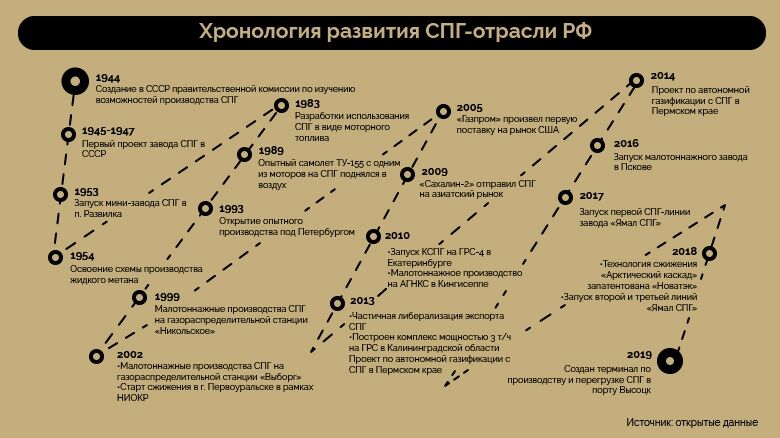
Due to the, that domestic enterprises did not have the necessary equipment, only other countries could provide it. First of all, purchases were planned to be made from the USA, but the cold war forced American firms, which, under Lend-Lease, were supposed to supply equipment for the gas pipeline in a comprehensive manner, get away from completing the supply of equipment for this plant.
Gas liquefaction research and development of various projects, which were held in subsequent years, had to curtail. The reasons were different: lack of funding, no need for a particular technology, change of interests of the Soviet government.
The next stages in the development of the domestic LNG industry took place in the 1970s.. At that time, the Ministry of Gas Industry of the USSR was thinking about supplying the resource to the American market., counting on the easing of tensions due to the cold war.
The first project in the country, which the department dubbed "North Star", assumed participation in the potential development of gas fields on the Yamal Peninsula, gas pipeline to Murmansk by US companies. While the American side was considering Soviet plans from across the ocean, Moscow negotiated with Japan on gas supplies from Yakutia for liquefaction on the Pacific coast.
But these plans fell through. strategy, thought out by the USSR Ministry of Gas Industry, fell on the back burner and later simply became irrelevant due to the decision of US President Ronald Reagan to stop cooperation with Moscow. At the same time, the Russian side returned to the role of an exporter of pipeline gas to Europe., leaving dreams of disruptive LNG technology behind.
Russian gas - foreign technologies
After the collapse of the USSR, the achievements of the Soviet years were lost or lost their relevance against the background of the achievements of Germany, China and other states. Countries created special equipment, while Russian production stood aside.

“At the same time, the country had to hastily make up for lost time.. Success was not achieved in all. To this day, one problem persists: Russian companies are forced to purchase foreign equipment for the development of breakthrough projects.
There are no analogues of foreign installations in Russia, capable of performing tasks with the same energy consumption and speed. Therefore, when holding tenders, domestic installations lost, and the largest Russian companies, demanding to increase purchases of equipment, produced in the Russian Federation, were content with foreign.
Of course, Russia has its own technologies, and she can use them in case of an emergency, but they lag behind those, which provides, eg, German The Linde Group ", – told Alexander Frolov.
A special LNG industry
Despite the technical difficulties, Russian equipment is still used in some production facilities. The interlocutor of FBA "Economics Today" notes, that today LNG is divided into large-tonnage and low-tonnage, and in some cases for a medium-tonnage as an intermediate option. All of them are applied in different areas., since they differ in physical and chemical characteristics.
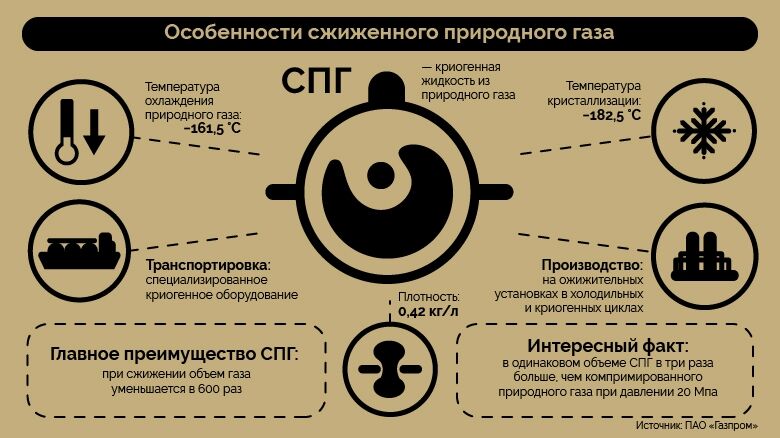
“Large-tonnage is an export product, used by buyers like conventional natural gas, piped. A large part of this resource is directed to heat production and the needs of the chemical industry..
Low-tonnage and sometimes medium-tonnage is used in land transport, when grouping ships or autonomous gasification. The need exists in all three areas. There are plans for them, which have been implemented over the years ", – the expert added.
The LNG industry in the Russian Federation has one main problem - the lack of its own modern, efficient and competitive technologies, which are widely used in the production of large-scale liquefied natural gas, that is, from a million tons per year.
The first LNG plant appeared on Sakhalin as part of the Sakhalin II project. Its total capacity is 9,6 million tonnes per year, and production volumes reach 11 million tons. The Russian authorities expect to launch a third line in 2024-2026 capacity in 5,4 million.
Three lines of the plant received a capacity of 18 million tons, and the fourth line is still on 0,9 million tons to be completed in the future. Despite, that the enterprise was supposed to produce a resource for a consumer from the Asia-Pacific region, almost the whole volume in 2020 year left for Europe.
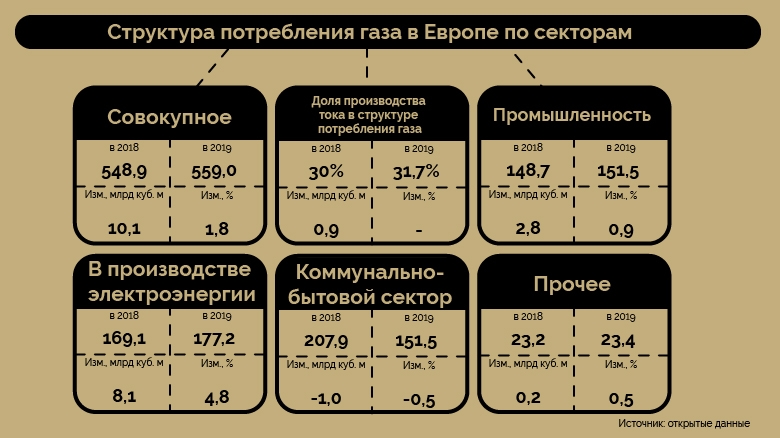
Russian LNG in the world
recent 40 years, there has been an annual increase in the consumption of liquefied natural gas in various countries. Russia joined the international competition for the growth of LNG at the end of the last decade.
In addition to Russia, LNG is exported by 17 states, from which the resource acquires more 40 nations. The main players, determining the cost of liquefied gas, the countries of the Asia-Pacific region remain (perfume). It was at them that Moscow was aiming, when the country entered the world of LNG.
“Domestically, this resource is considered as fuel for refueling sea and river vessels.. The corresponding plans are already being implemented in the north-west of the country and may affect the Far East, where there is also demand. China is showing interest in Russian raw materials, where the industry is developing by leaps and bounds ", – the expert.
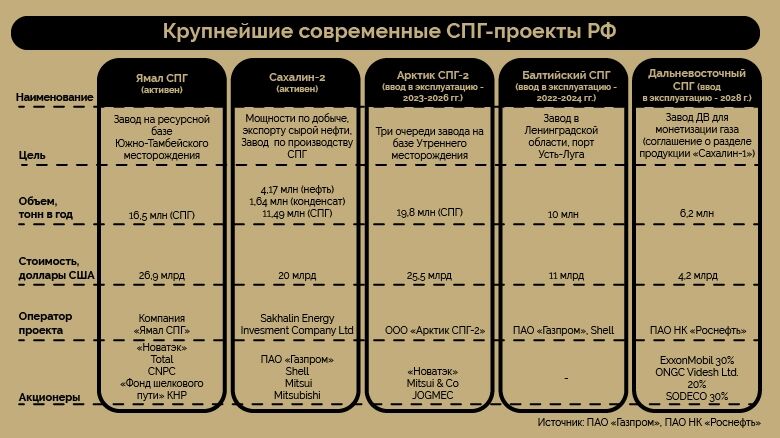
Next year promises new projects for Russia. So 2022 year, Gazprom expects to launch the LNG-Portovaya plant with a capacity of 1,5 million tonnes on the shores of the Gulf of Finland and build Vladivostok LNG of the same capacity.
The Baltic LNG project of the same company should start working in 2023-2024 years. Its capacity will be 10-13 million cubic meters. Another major LNG producer, NOVATEK, plans to launch Arctic LNG-2 with a capacity of 19,8 million cubic meters.
The aggregate capacity of Russian LNG projects has reached 28,5 million tons, which allows companies to supply 47,9 million tonnes to 2024 year, and to 2035 increase production to 120-140 million tons.
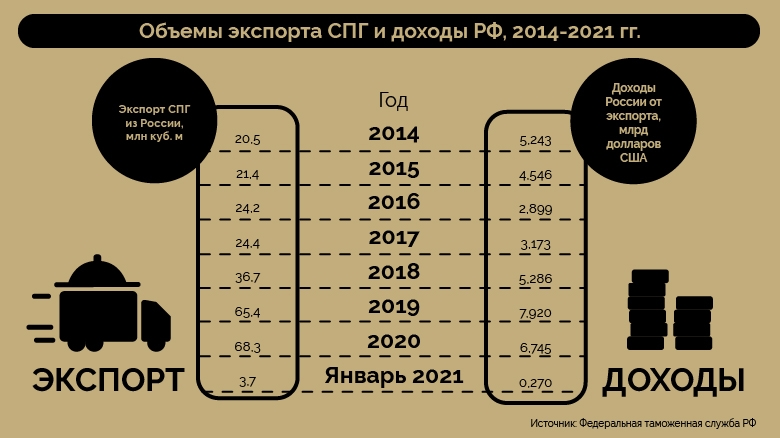
"It is assumed, that production will develop on the basis of domestic technologies, in the development of which funds are already being invested. Quite possible, that recoil will appear. In an extreme case, you will have to resolve the issue of localization of foreign equipment.
In addition to the above, cryogenic filling stations are being built in the country.. Developers are counting, that they will be refueled by heavy vehicles when transporting goods through Russian territories from China to Europe and back ", – He explained the expert.
Alexander Frolov noted, that LNG is considered easy to use and financially beneficial to consumers. In addition, participation in LNG projects allows Russia to maintain its position in the European gas market and resist geopolitical pressure from the United States of America and other players..
Alexander Melnik









